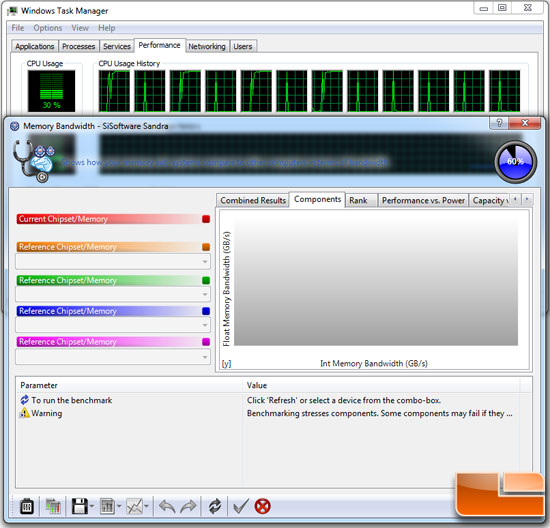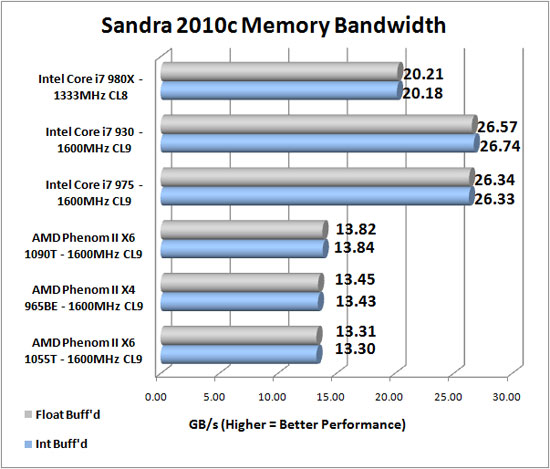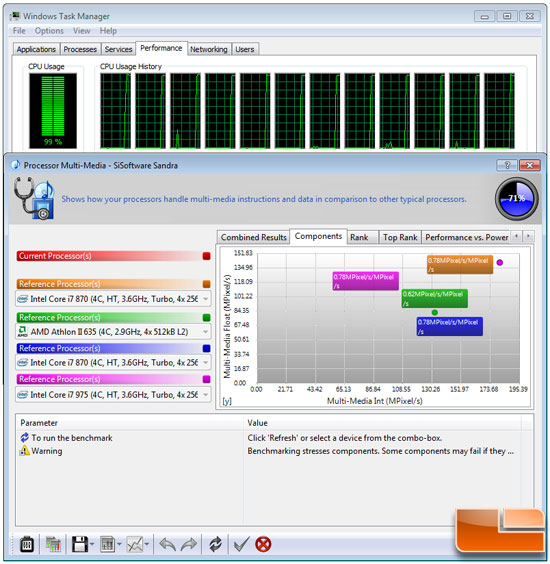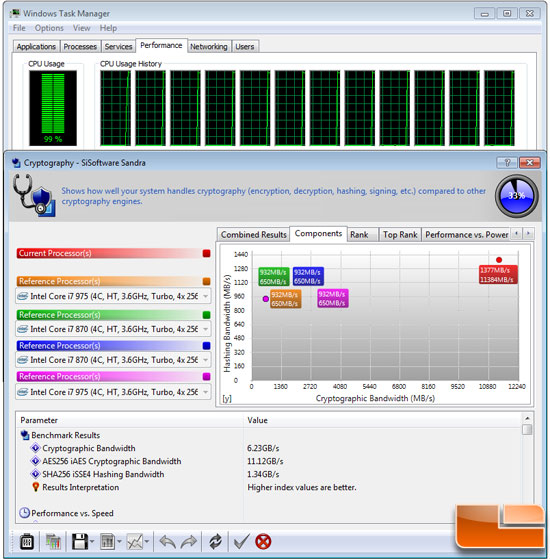AMD Phenom II X6 1090T and 1055T Six-Core Processor Review
SiSoftware Sandra 2010c

The Sisoft Sandra 2010c benchmark utility just came out a few weeks ago and we have started to include it in our benchmarking. Sandra 2010 now comes with support for Virtualisation (Virtual PC/Server, Hyper-V, VMware) and GPGPU (OpenCL, DirectX 11 DirectCompute, but today we will be using the program to look at memory and CPU performance!

Results: Sandra 2010c showed that the Intel Core i7 930/975 system with the memory running at 1600MHz CL9 timings was the memory to reach nearly 26GB/s throughput, which is impressive thanks to the triple-channel memory. AMD’s Phenom II X4 and X6 processors use dual channel technology and at 1600MHz with CL9 timings. The performance results of the Phenom II X6 processors aren’t too different from the Phenom II X4 965 Black Edition as all have ~13.5GB/s of memory bandwidth.

The Sandra Processor Multi-Media benchmark has been a long time favorite of ours to look at floating point performance on processors, so let’s see how Intel’s latest 32nm mobile processor does!

Results: In the Multi-media processor test the AMD Phenom II X6 processors strut their stuff and solid performance numbers and are able to compete with the Intel Core i7 series of processors!

Cryptography has become an important part of our digital life: it
allows us to conduct safe transactions online, certify programs and
services, keep our data secure and much more. Sandra 2010c has a dedicated benchmark built-in that measures cryptographic performance, which is important on the new Intel 32nm processors like the Core i7 980X that we are benchmarking today. It includes features like AES-NI! Intel AES-NI is a new set of Single Instruction Multiple Data (SIMD) instructions that are going to be introduced in the next generation of Intel processors, as of 2009. These instructions enable fast and secure data encryption and decryption, using the Advanced Encryption Standard (AES), defined by FIPS Publication number 197. The architecture introduces six instructions that offer full hardware support for AES. Four of them support high performance data encryption and decryption, and the other two instructions support the AES key expansion procedure. Let’s take a look at how this feature impacts Cryptography performance.

Results: The Intel Core i7 980X Processor with AES-NI has significantly more Cryptographic Bandwidth than the previous generation Intel Core i7 975 processor and all the other desktop processors that we tested!

Comments are closed.